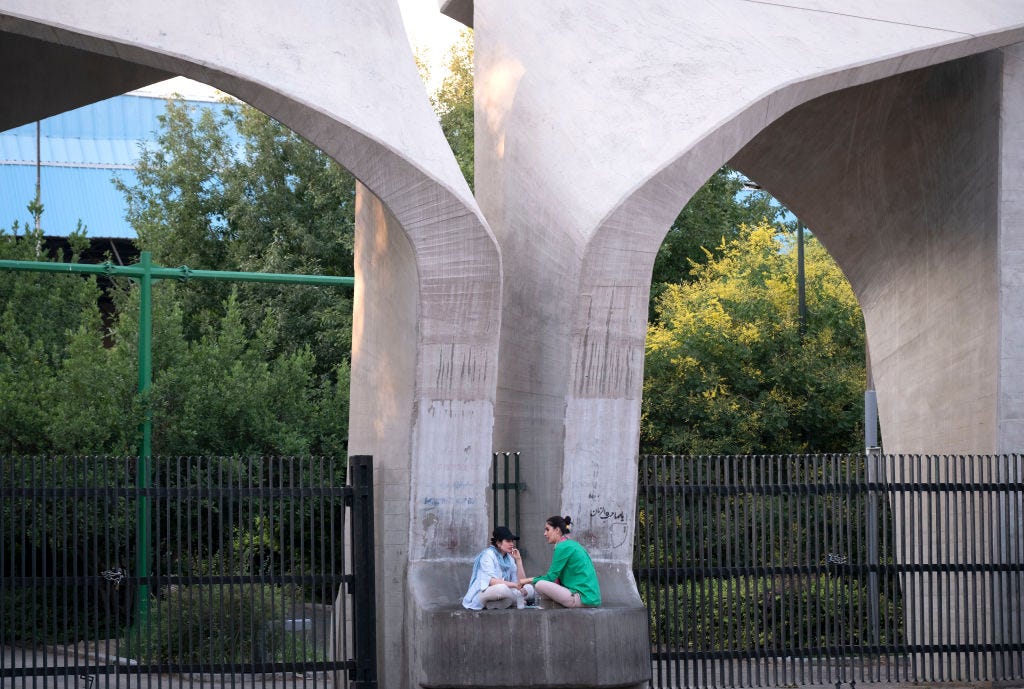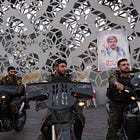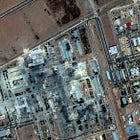Iran’s Crackdown on Free Thought
When a state fears the classroom, it is already at war with its future.

This article is brought to you by American Purpose, the magazine and community founded by Francis Fukuyama in 2020, which is proudly part of the Persuasion family.
When Islamic Azad University summoned veteran professor Mehdi Zakarian for “supporting Western-oriented thinking,” it reflected the Islamic Republic’s ongoing war against intellectual freedom. In Iran, universities are not sanctuaries of inquiry but battlegrounds where dissent is equated with subversion.
Since the Islamic Republic was founded in 1979, the university has been a battleground between the regime, which seeks to control and use it for its own ideological purposes, and academics who fight for scholarly independence and autonomy. That is why, under the banner of “Cultural Revolution,” the regime shuttered universities for three years in the 1980s to purge dissenting students and professors and to Islamize higher education.
To achieve this, disciplinary boards became instruments of political control. Universities dismissed thousands of professors deemed liberal or Marxist, and thus disloyal to the revolutionary order. The 1984 Disciplinary Rules for Faculty Members gave regime-controlled committees, including clerics teaching obligatory Islamic studies courses, sweeping powers to investigate not only administrative or professional issues but also ideological and “Shari’a-related” offenses. The range of so-called violations was staggering: unauthorized meetings, strikes, blasphemy, “atheistic ideas,” or “support for misguided sects.”
The punishments are equally harsh. Faculty can be summoned, reprimanded, expelled, or permanently banned from public service. Under the 1986 Disciplinary Act for the Country’s Faculties, accused professors are denied the right to a personal defense. Vague definitions of “ethical” or “political” crimes allow these committees to weaponize accusations at will, leaving dissenting professors vulnerable to arbitrary expulsion.
Disciplinary boards do not operate in isolation. They are part of a larger repressive apparatus that includes the campus intelligence offices (herasat), law enforcement (entezamat), the Basij militia, the “Supreme Leader Representation in Universities,” and other coercive institutions. Together, they form a web of surveillance and intimidation designed to ensure that universities remain sites of indoctrination rather than inquiry.
The system extends to admissions. Universities allocate seats through a quota system favoring regime loyalists, sometimes up to 70 percent in certain disciplines, as a form of patronage to consolidate support. Universities simultaneously “purified” curricula of secular perspectives and infused them with Quranic studies across multiple fields, embedding ideological vetting into every stage of higher education.
The purge of the 1980s continued into the 1990s, albeit gradually. Even under relatively moderate presidents such as Ali Akbar Hashemi Rafsanjani (1989-1997) and Mohammad Khatami (1997-2005), universities expelled such well-known professors as Jalil Roshandel and Seyed Javad Tabatabai.
Under Mahmoud Ahmadinejad’s presidency (2005-2013), Iran launched a second cultural revolution aimed at tightening ideological control over universities. This resulted in the expulsion of many Iranian students and professors, including the renowned political scientist Hossein Bashiriyeh, who now teaches at Syracuse University. I was fired in this wave, after four years of teaching at Islamic Azad University. The wave intensified after the 2009 Green Movement, which erupted after a disputed presidential election, when universities forced dozens of professors sympathetic to protesters into early retirement or exile.
A “third cultural revolution” began after Ebrahim Raisi’s rise to the presidency in 2021. Notable dismissals included Arash Abazari, now at Emory University. Following the 2022 “Women, Life, Freedom” uprising, repression intensified: Professors faced interrogation and marginalization, while universities suspended or expelled hundreds of students. Reports by Scholars at Risk documented a consistent pattern of intimidation, denial of promotion, and dismissal for those deviating from the official line.
Although political repression slowed under President Masoud Pezeshkian, who assumed office after Raisi’s death in a helicopter crash in May 2024, pressure on universities returned. Zakarian’s summons at Islamic Azad University, along with that of Hatem Qaderi, a political science professor at Tarbiat Modares University, marked a renewed campaign of policing thought.
The timing is telling. These incidents followed the Twelve Day War between Iran and Israel, which dealt a blow to the Islamic Republic. Rather than ease domestic pressures to allow critical voices to help the country recover, a hope that Zakarian expressed, the opposite occurred: Insecurity at the top translated into repression below. According to Amnesty International and Human Rights Watch, security forces arrested more than 20,000 people, including dissidents and activists, under the guise of national security, with ethnic and religious minorities accused of being spies for Israel.
This pattern is not new. In the wake of military or political humiliations, authoritarian regimes often crack down internally to project strength, scapegoating intellectuals to divert attention from failures. Iranian universities, long a barometer of the country’s political climate, once again stand at the forefront of repression.
Summonses such as those of Zakarian and Qaderi are less about individual behavior than enforcing ideological conformity. By criminalizing engagement with global ideas and labeling them “Western influence,” the Islamic Republic reveals its fear that free inquiry could challenge its legitimacy.
The regime frames such purges as defending revolutionary ideals from “foreign infiltration,” what Ayatollah Ali Khamenei calls “cultural invasion.” In reality, they betray the regime’s lack of confidence that its ideals can withstand debate. For the Islamic Republic, universities are not centers of knowledge but ideological battlefields where enemies allegedly conspire to corrupt Iran’s youth.
The costs are profound. By silencing academics rather than engaging them, the regime undermines its own resilience and innovation. Decades of cultural revolutions have already eroded Iran’s standing in higher education. A state that stifles academic freedom loses the capacity for reflection, correction, and the intellectual capital needed to recover after crises. Scholars call this the “dumbification of the state”—the erosion of meritocracy and critical thought through repression and patronage.
Zakarian’s ordeal is a warning: When a state fears the classroom, it is already at war with its future. The fate of Zakarian and Qaderi underscores a larger truth: Authoritarian regimes view universities not as incubators of innovation but as battlegrounds of control, which they can weaponize to police thought and manufacture loyalty.
A version of this piece was originally published on the Middle East Forum.
Saeid Golkar is an associate professor of political science at the University of Tennessee-Chattanooga, a senior advisor at United Against Nuclear Iran (UANI), and a writing fellow at the Middle East Forum.
Follow Persuasion on Twitter, LinkedIn, and YouTube to keep up with our latest articles, podcasts, and events, as well as updates from excellent writers across our network.
And, to receive pieces like this in your inbox and support our work, subscribe below:





